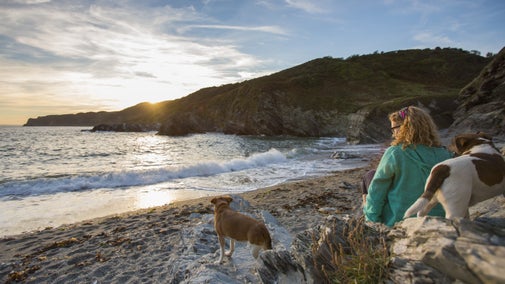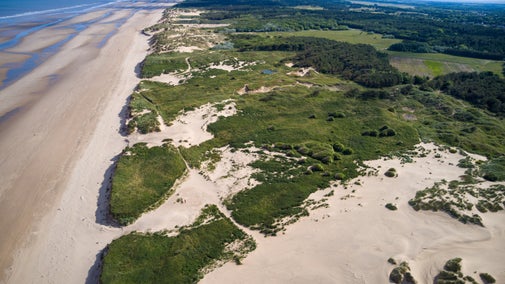
Discover more at Formby
Find out how to get to Formby, where to park, the things to see and do and more.

Formby is a coastal nature haven for both wildlife and people. You’ll discover some of Europe’s most important and protected sand dune habitats, where many rare species thrive including sand lizards and natterjack toads. You can also catch glimpses of the past, from prehistoric footprints to old shipwrecks.
Victoria Road car park closed until spring 2026 for conservation work - no pedestrian access through the work site. Please don’t travel to us by car on sunny days. Get the train to Formby station or visit alternative beaches along the Sefton and Wirral Coast. Thanks for your understanding whilst we enhance this special space.
Formby can get extremely busy during school and bank holidays, particularly on sunny days. With space for around 600 vehicles, our car parks can fill up quickly, at which point we close them for the rest of the day. This is for the safety of the people wandering the site, and to prevent cars from queuing.
During opening hours, members of the team will be there to welcome you. Do say hello – we’re always happy to chat and share information.
Find out more about alternative beach parking along the Sefton Coast here.
Discover the top 5 Wirral beaches here

The Sefton Coast sand dune system is recognised as one of the most important dune habitats in north-west Europe, and is designated as a Site of Special Scientific Interest. Formby’s dunes, heathlands, grasslands and plantation woodlands create a mosaic of habitats where many rare and more common plants and animals thrive – everything from natterjack toads, sand lizards, red squirrels and internationally important wading birds, to a wide variety of wildlflowers, butterflies and moths.
We need your help to create the special, natural environment that all the wonderful wildlife that calls Formby home needs to thrive. Thank you for leaving only your footprints behind.
– Justin Matthews, Lead Ranger

Formby’s shifting tides occasionally uncover prehistoric footprints in silt beds on the beach —some dating back to 8,000 BC. Imprinted by humans, birds, and animals, these traces of the past offer a unqie glimpse into the natural history of the area - including how grazing animals like deer and aurochs (the wild ancestors of domestic cattle) once helped manage the landscape by keeping invasive scrub at bay.
From time to time we host special guided footprint walks to discover the footprints look out for upcoming dates on our website and social media.
You can find out more about Formby's pre-historic footprints and see some photographs click here
Roughly one kilometre from the coast, you can see two shipwrecks embedded in the sand at low tide. The Ionic Star was a steam cargo ship that ran aground on the Mad Wharf sandbank in 1939.
Not far from the Ionic Star is a lump of metal and a line of wooden spars – all that remains of the Bradda, which came to grief in 1936, claiming the lives of all but one of her crew. The tragic loss of life makes the remains of the Bradda a poignant place on the Sefton Coast.
Timing is crucial for visiting the wrecks, so they're best viewed with an experienced guide and wellies. To find out about upcoming guided walks to the shipwrecks at Formby, please check our social media or email formby@nationaltrust.org.uk.

Find out how to get to Formby, where to park, the things to see and do and more.
Discover the 890 miles of beautiful coastline in our care. Plan your next coastal adventure, whether you want to explore soft, sandy beaches or rugged, windswept cliffs.

Try out the ‘50 things to do before you’re 11¾’ activities children can enjoy by the sea, from paddling or swimming, to catching crabs and skimming stones.

Formby is steeped in history if you know where to look. Discover the history of Formby’s asparagus fields, prehistoric footprints and shipwrecks.

Formby is one of the fastest changing stretches of coastline that we care for. Discover how the team are working with nature to protect rare habitats and wildlife.

Learn how to spot red squirrels, the best times to see them and how to tell them apart from grey squirrels.
